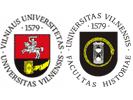The history of interwar Russian Orthodox societies has not been analysed in Lithuanian historiography so far. N. Kasatkina and V. Agafonova had published some articles related to the history of the Orthodox societies, but it was not the aid they proposed.
The Orthodox community of interwar Lithuania was a part of the Russian national minority. 23 000 members belonged to it. People of other nationalities were not numerous in the Orthodox community and its activities. The majority of Russians in the Orthodox societies numbered 95.4 proc. Lithuanians, Byelorussians and other professed the Orthodoxy too, but thinly.
Societies were a very important form of activity, which had inspired the closer integration of interwar Orthodox community. United system of Lithuanian Orthodox societies was built in the period of 1924–1933. The were seven societies of the Orthodox, that acted in interwar Lithuania. Four of them were in Kaunas. Their purpose was to develop charitable activities, devoted to the improvement of the Lithuanian Orthodox community.
The Orthodox societies of interwar Kaunas were not numerous. Many of their members were elder people. Women had formed the biggest part of their members. The most important traits of the Lithuanian Orthodox societies activities were lack of finances and fighting against indifference between members of the Lithuanian Orthodox community.
Otherwise, the existence of the Orthodox societies in Kaunas has determined the bigger integration inside of the Russian community. A lot of people adopted the idea of charity. They attended the benefit concerts, which were arranged by the Orthodox societies of Kaunas. It was a good way for them to communicate and give a knee for each other.
The activities of the Orthodox societies could be characerized as a trial of close integration, which unfortunately was not realized. Lack of spiritual and financial responsibility, an intention to trade on results, which were reached by societies, has almost made their activity effectless and prospectless. | 

 dizainas ir programavimas giriaus
dizainas ir programavimas giriaus  dizainas ir programavimas giriaus
dizainas ir programavimas giriaus